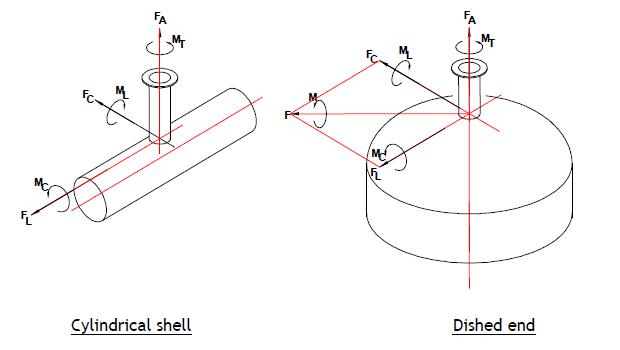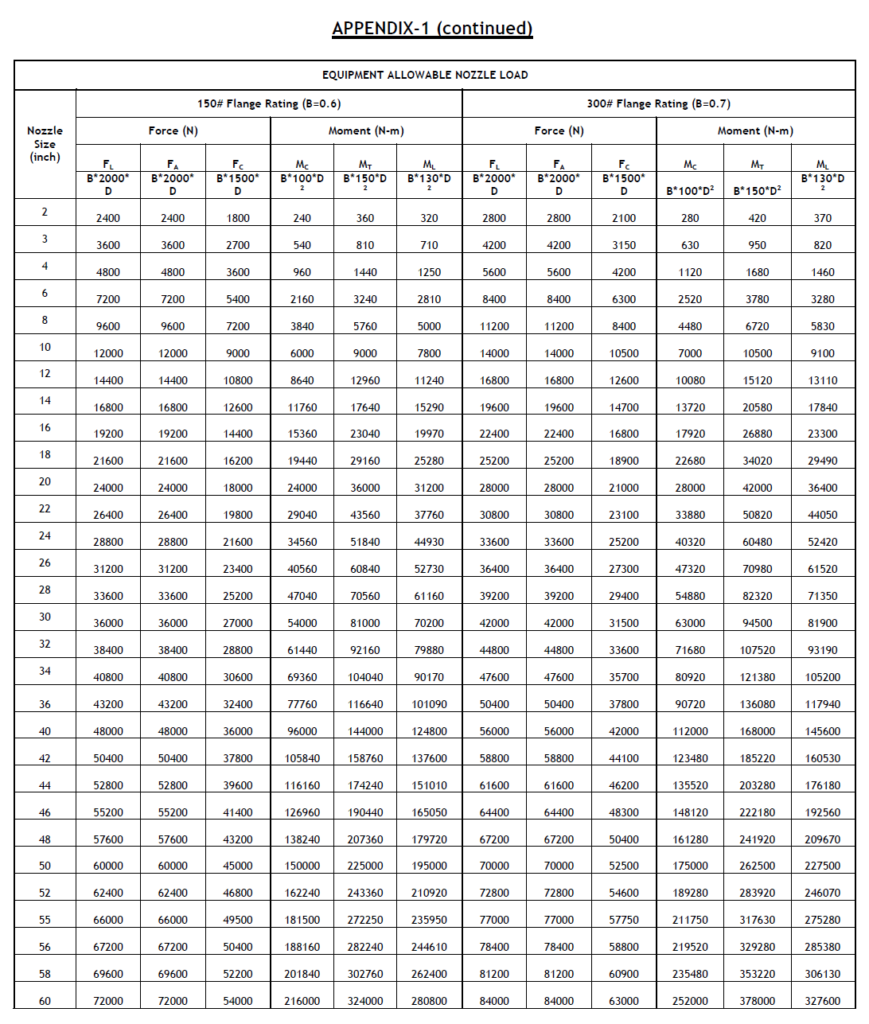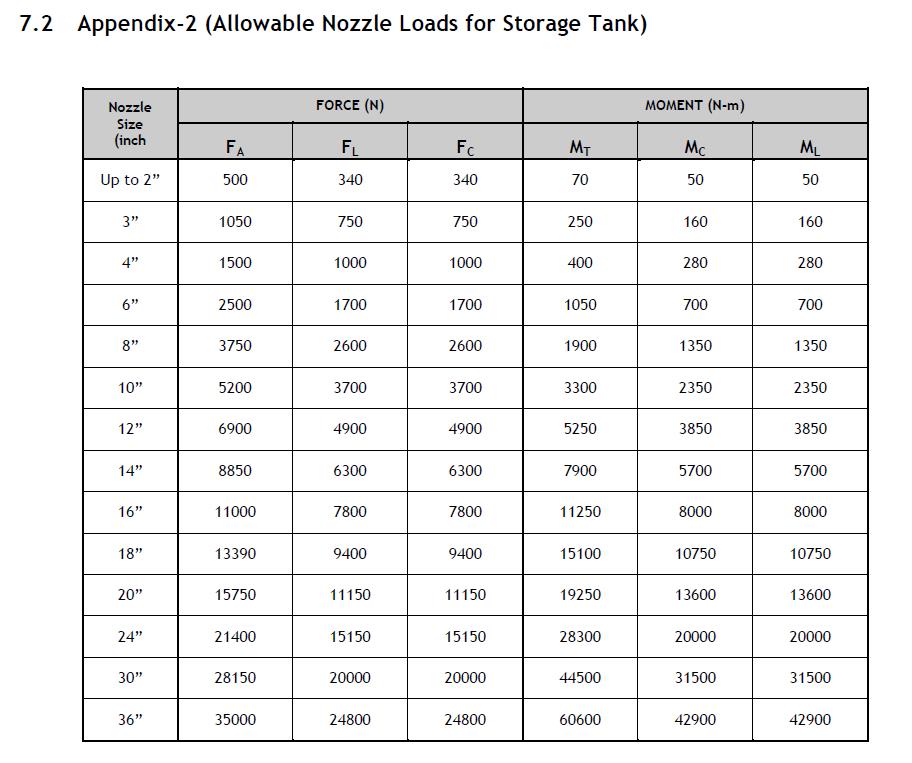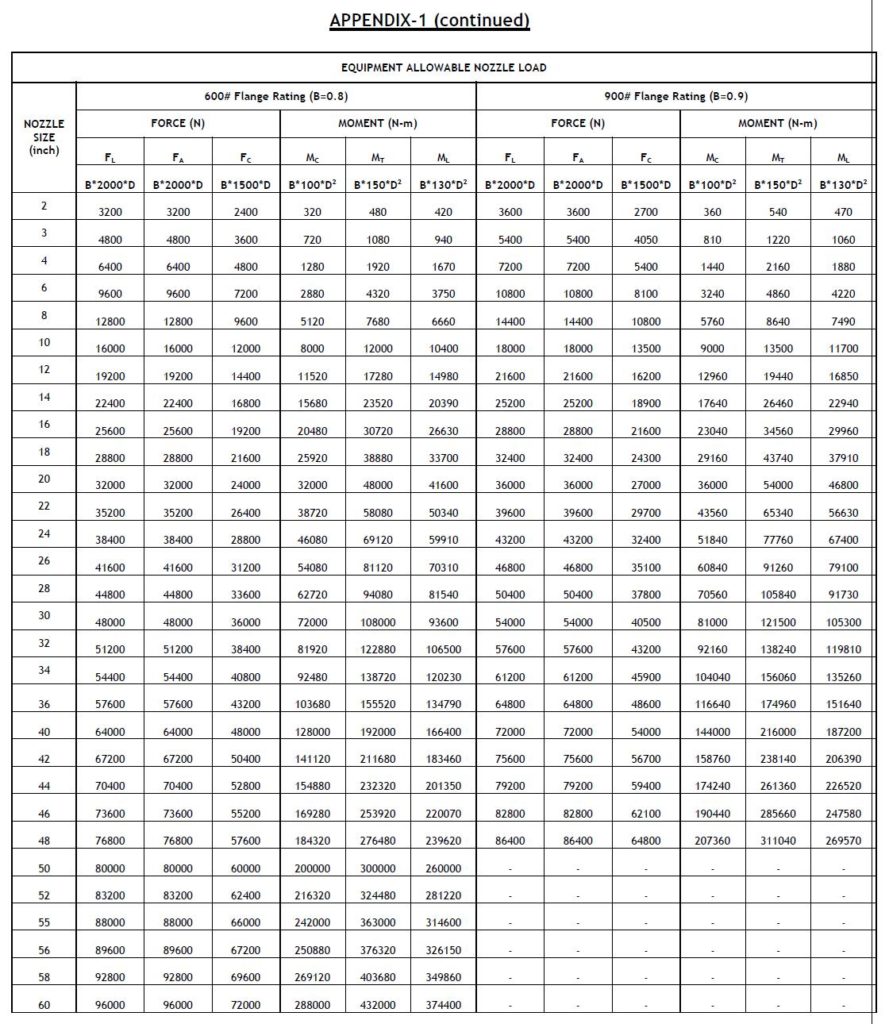Nozzle Loads
1.0 Introduction to Nozzle Loads
As a minimum, the Piping Stress Engineer shall ensure that the loads on the Nozzle of the Mechanical Equipments are within these values. In the event the loads are exceeding the allowable loads values, prior approval from the supplier shall be taken.
It is advisable that, the Fabrication / Procurement of these equipments shall be carried out after the confirmation of the loads on the Nozzle by both the party (Purchaser and Supplier).
2.0 Types of Mechanical Equipments
Mechanical Equipments are classified in two types viz. Fabricated Equipments& Proprietary Equipments. Criteria for defining the allowable loads on the Nozzles of these equipments are given below.
2.1 Fabricated Equipments
Various Mechanical Equipments like Pressure Vessels, Columns, Heat Exchangers (Shell & Tube type and Plate type), cylindrical storage tanks, etc. are classified under this category.
This post specifies the criteria to be adopted while defining the allowable loads acting on the Nozzles of the various Mechanical equipments, due to the loads imposed by the connected piping system. These loads shall be included in the Mechanical design of the equipments during procurement.
- Allowable Forces & Moments
The allowable loads for the Fabricated Equipmentsshall be in accordance with Appendix-1. These values are applicable for equipments, withcarbon steel and stainless steel as material of construction.
For equipments made of other material, the supplier shall provide an appropriate set of calculations for approval.
The allowable loads for the Cylindrical Storage Tanks shall be in accordance with Appendix-2.
- Statement of Compliance
The Equipment Supplier shall check the stresses in the nozzle/equipment resulting from the allowable loads as specified above, in accordance with WRC bulletin WRC107/ WRC297 /ASME Section VIII Division 2.
The Equipment supplier shall provide a statement of compliance with this specification.
- Higher Allowable Loads
This specification gives the maximum allowable loads which the nozzle can withstand without failure. However, depending on the configuration of the connected Piping system or due to the various design conditions analyzed, the loads imposed on the Nozzle may exceed these allowable values.
In such cases, theactual loads shall be communicated to the Supplier. The Supplier shall check the integrity of the nozzle / equipment. If acceptable, the Supplier shall approve these loads and incorporate the same in the equipment design. However, if these loads are not acceptable, the supplier shall submit the calculations /technical explanation supporting the same.
Any calculations required to be done and any reinforcement required to be provided on the equipment shall be part of Supplier’s scope of work.

Legends:
FL – Longitudinal shear force
FC – Circumferential shear force
FA – Axial tension or compression force
ML – Longitudinal bending moment
MC – Circumferential bending moment
MT – Torsional moment
F – Resultant Shear Force
M – Resultant Bending Moment

Notes:
- The above loads are applicable for following equipment:
- Shell & tube and Plate type heat exchangers
- Pressure vessels
- Columns
- Each nozzle shall be capable of withstanding the above forces and moments under the design conditions and are considered to be acting simultaneously at the intersection of nozzle axis with outer surface of the shell or head plates, in corroded condition.
- All forces and moments in the above tables are positive and sign rotation is as per WRC bulletin 107. The most stringent case caused by axial load FA acting inward or outward shall be considered.
- For dished ends, the resultant shear force and bending moment are calculated as:
F = SQRT {(FL) 2 + (FC)2}
M = SQRT {(ML) 2 + (MC)2}
- The loads stated above shall be used as the design basis for nozzles. When loadings in excess of above listed standard allowable nozzle loadings are required, the supplier will be informed. When the information becomes available the supplier shall check and incorporate these loads in the equipment design.
Wherever necessary, the nozzle/ vessel shall be reinforced. In case the Supplier finds that the higher loads cannot be incorporated, he shall submit calculations/technical explanation to justify the same, indicating the maximum load that can be incorporated.

Notes:
- Each nozzle shall be capable of withstanding the above forces and moments under the design conditions in the worst-case combination of direction of forces & moments and internal pressure, and are considered to be acting simultaneously at the intersection of nozzle axis with outer surface of the shell or roof plates, in corroded condition. Supplier to provide all the necessary calculation to demonstrate the compliance to above, in accordance with API 650 Appendix P / BS 2654 or required FE calculation if any standard method can’t be applied.
- Vendor to provide necessary reinforcement to comply with above standard allowable nozzle loadings requirement.
- Tabulated loadings also apply to roof nozzles, except that the radial load becomes vertical load, and the allowable resultant shear force and bending moment should be as follows, rather than individual allowable shear force and bending moment components:
F = SQRT {(FV) 2 + (FH) 2}
M = SQRT {(ML) 2 + (MC) 2}
- The loads stated above shall be used as the design basis for nozzles. When loadings in excess of above listed standard allowable nozzle loadings are required, the supplier will be informed when the information becomes available.
The supplier shall check and incorporate these loads in the equipment design.
Wherever necessary, the nozzle/tank shall be reinforced. In case the Supplier finds that the higher loads cannot be incorporated, he shall submit calculations/technical explanation to justify the same, indicating the maximum load that can be incorporated.
